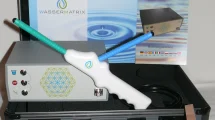The thermal paste business is an integral part of the electronics industry, especially in the context of computer hardware and other heat-intensive devices. These specialized pastes play a crucial role in dissipating heat from components such as CPUs, GPUs and power semiconductors by providing an efficient thermal interface between the heat source and the heat sink. Despite their apparent simplicity, thermal pastes are the result of advanced chemical research and development, and their production and commercialization holds both profitable opportunities and hidden costs. In this technical paper, we explore the business model behind thermal pastes, including revenue streams, production costs and the challenges of developing thermal pastes that offer high performance at competitive prices.
The real manufacturers of the pastes and their costs
The profit potential for thermal paste manufacturers is significant, driven by the constant need for effective cooling solutions in the growing electronics industry. With the advent of new technologies and the constant drive for more powerful and efficient devices, the demand for high quality thermal pastes is increasing. Manufacturers can capitalize on this demand by offering products that:
- Provide high thermal conductivity to dissipate heat efficiently.
- Have long-term stability to avoid the need for frequent applications.
- Are easy to use to appeal to a wide range of buyers.
The thermal paste business offers significant profit opportunities, but also faces challenges in terms of cost and developing products that are both high performing and cost effective. A successful strategy requires a careful balance between investment in R&D, efficient production processes, intelligent marketing strategies and effective pricing in order to compete. Manufacturers who are able to strike this balance can not only operate profitably, but also make a valuable contribution to the advancement of electronics cooling.
The actual cost of manufacturing thermal compounds includes a variety of factors, from raw material costs to research and development (R&D), production, packaging, marketing and distribution. The most important cost factors include:
- Raw materials:
High-performance fillers such as silver, copper, aluminum oxide or boron nitride are expensive, and their prices can vary considerably depending on market fluctuations. - Research and development:
Developing a thermal compound characterized by superior performance or special properties requires significant investment in R&D. - Production processes:
Producing thermal paste with consistent quality and in large quantities requires precise equipment and a highly skilled workforce - Packaging and logistics:
Packaging must protect the paste from drying out, and logistics can add significantly to costs, especially with international distribution. - Marketing and sales:
Product positioning in the market, branding and distribution, including e-commerce and retail partnerships, also require significant investment.
Manufacturers of thermal pastes face the challenge of optimizing their costs without compromising the quality or performance of their products. Their cost reduction strategies include:
- Increasing efficiency in production:
Automation and process optimization can help reduce production costs. - Innovative formulations:
Developing new formulations that use less expensive fillers without compromising performance can reduce material costs. - Economies of scale:
Larger production volumes can lead to cost savings that can be passed on to customers. - Direct sales and online marketing:
These approaches can help to avoid the costs of intermediaries and efficiently increase brand awareness.
Bottlers and pure resellers or labels / brands
The thermal paste industry, like many other industries, involves a variety of players, including manufacturers, fillers and resellers. While manufacturers often take on the development, formulation and initial production of the pastes (see above), there are also business models in which fillers play a central role. These companies buy base pastes or bulk materials directly from the manufacturers and then fill them into smaller, retail-ready packages. This model can lead to extremely high profit margins in certain circumstances, especially if the fillers are able to sell the products at a significant mark-up over the purchase price. This phenomenon is considered by some to be “bad business”, especially if the pricing is not transparent or the added value for the end consumer appears low.
Bottlers can potentially make high profit margins by buying thermal paste in bulk and then repackaging it into smaller, branded packages. The difference between the bulk purchase price and the retail selling price minus the packaging and distribution costs represents their profit. Since the process of filling and packaging can be relatively inexpensive compared to the original manufacture of the paste, especially with efficient processes and the use of inexpensive packaging, the margin can be significant.
A key factor that enables bottlers to charge higher prices is branding. Through effective and often aggressive marketing (often via the usual influencers) and building a strong brand, bottlers can increase the perceived value of their products, even if the actual production costs are relatively low. This can be achieved through appealing packaging designs, compelling advertising and presence in popular distribution channels. The willingness of consumers to pay more for branded products plays a crucial role in this business model.
Bottlers’ practices can have different effects on consumers. On the one hand, bottlers provide some added value through their packaging and distribution services by making products more accessible and user-friendly. On the other hand, the high pricing partly based on these business models can be detrimental to consumers, especially if the price differences with the actual production costs are not justified by real added value.
Conclusion and summary
While bottlers and end suppliers in the thermal compound industry can certainly achieve high profit margins (a factor of 10 is not an upper limit), it is crucial that consumers understand the dynamics behind the scenes. The ability to differentiate between price, brand value and actual product performance is essential to making informed purchasing decisions. Furthermore, the market can only be sustainably influenced by consumer awareness and demand for fair pricing and transparency.
It is therefore important that consumers are aware of the difference between the cost of production and the retail price. An informed consumer can make better choices by selecting products based on their actual value and not just brand or marketing. Criticism of bottlers’ practices often relates to a lack of transparency and a lack of information about the actual origin and cost of products.
Furthermore, the end customer should only buy what they really need! The previous pages show that for an optimal solution it should not always be the most expensive product, but that a product should be used as appropriately as possible. Cryo-paste in desktop systems is a pure waste of money, marketing really laughs at such customers. In addition, the differences in thermal conductivity between the pastes are often so small that it is the application skills and layer thickness that make the difference (see page 3)! And then there are the specifications and imprints of the parameters… As a customer, it’s hard to prove the opposite, so people believe what is printed. Just like with newspapers…
I wanted to pass all this on to you with this compendium. It’s a shame that no one else writes about it, so after all these years I’ve pulled myself together and compiled all the things that have concerned me on a daily basis for a long time and often annoyed me. Yes, there are some really hard-working suppliers and even bottlers, but unfortunately these are the exception. It was just important to me to make the end customer more aware and to dispel some common myths. Paste and pads are of course not as effective as NVIDIA’s latest super cards, but I find the topic super exciting.
- 1 - The three big P's - introduction to pastes, pads and putty
- 2 - The purpose of thermal pastes
- 3 - The big debate between cheap and expensive
- 4 - The matrix as the basis for all pastes and pads
- 5 - Silicone-based pastes: optimization, durability, decomposition
- 6 - Thermally conductive fillers are important
- 7 - How the degree of grinding influences performance
- 8 - Silicone modification for low temperatures and LN2 overclocking
- 9 - The paste production process and possible hurdles
- 10 - Special case liquid metal (LM)
- 11 - Special case of graphite pads and phase changers
- 12 - Temperature window, expansion behavior, application
- 13 - Ageing and decomposition of pastes and pads
- 14 - Manufacturer vs. bottler, misleading marketing and conclusion
































216 Antworten
Kommentar
Lade neue Kommentare
Veteran
1
Veteran
Urgestein
Mitglied
Urgestein
1
Urgestein
Urgestein
Mitglied
Urgestein
1
Mitglied
Urgestein
1
Urgestein
1
Veteran
Alle Kommentare lesen unter igor´sLAB Community →